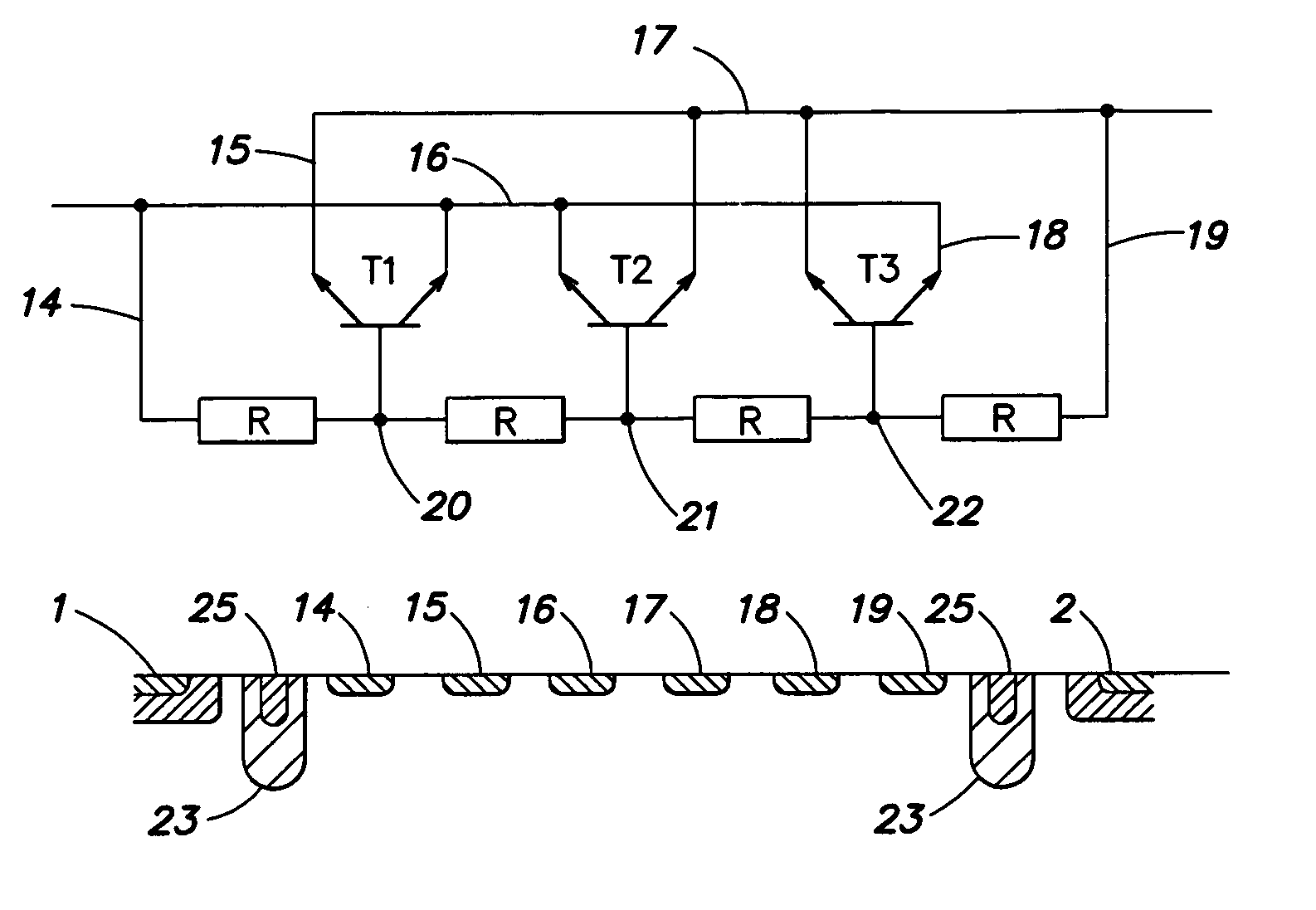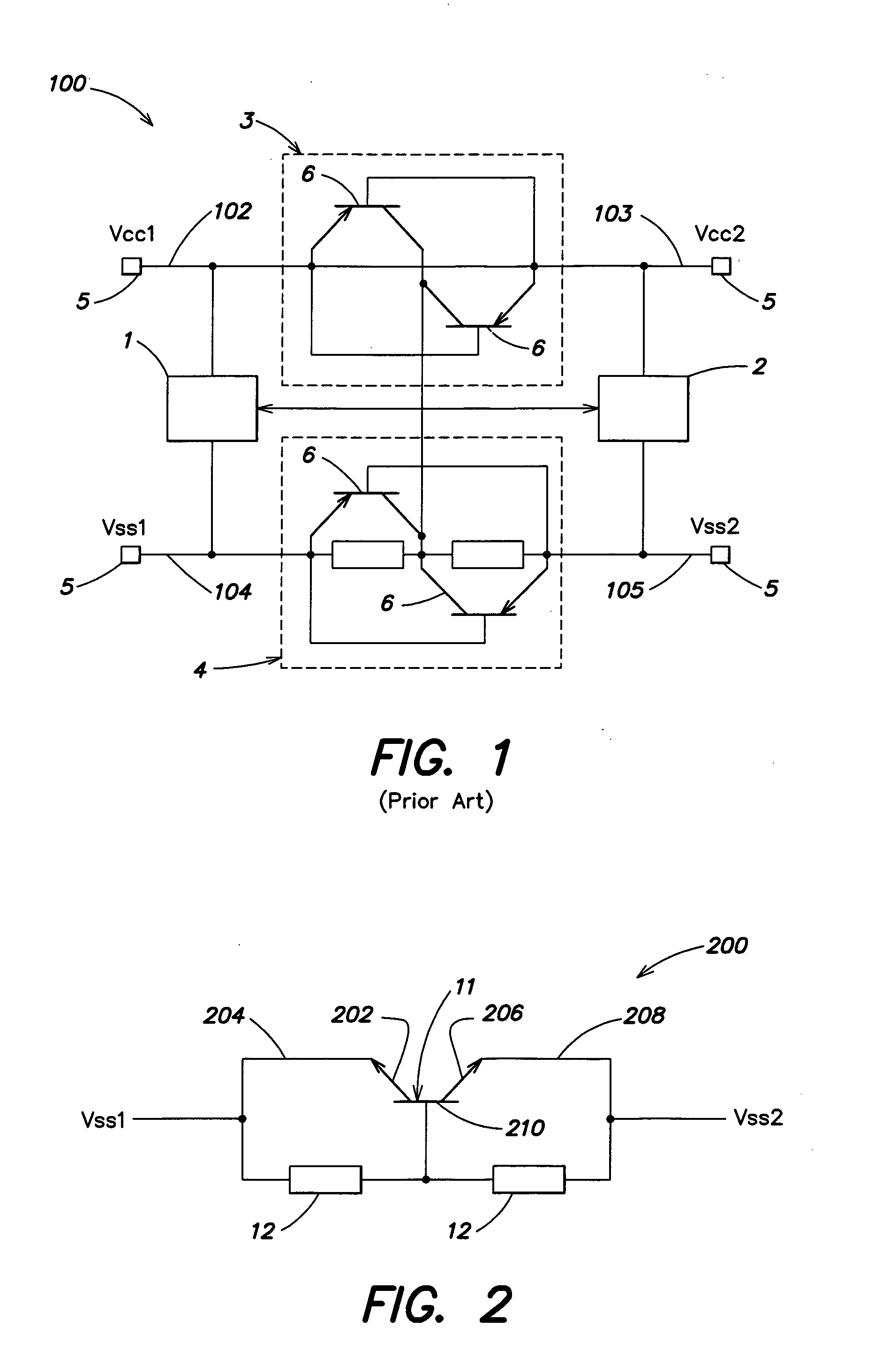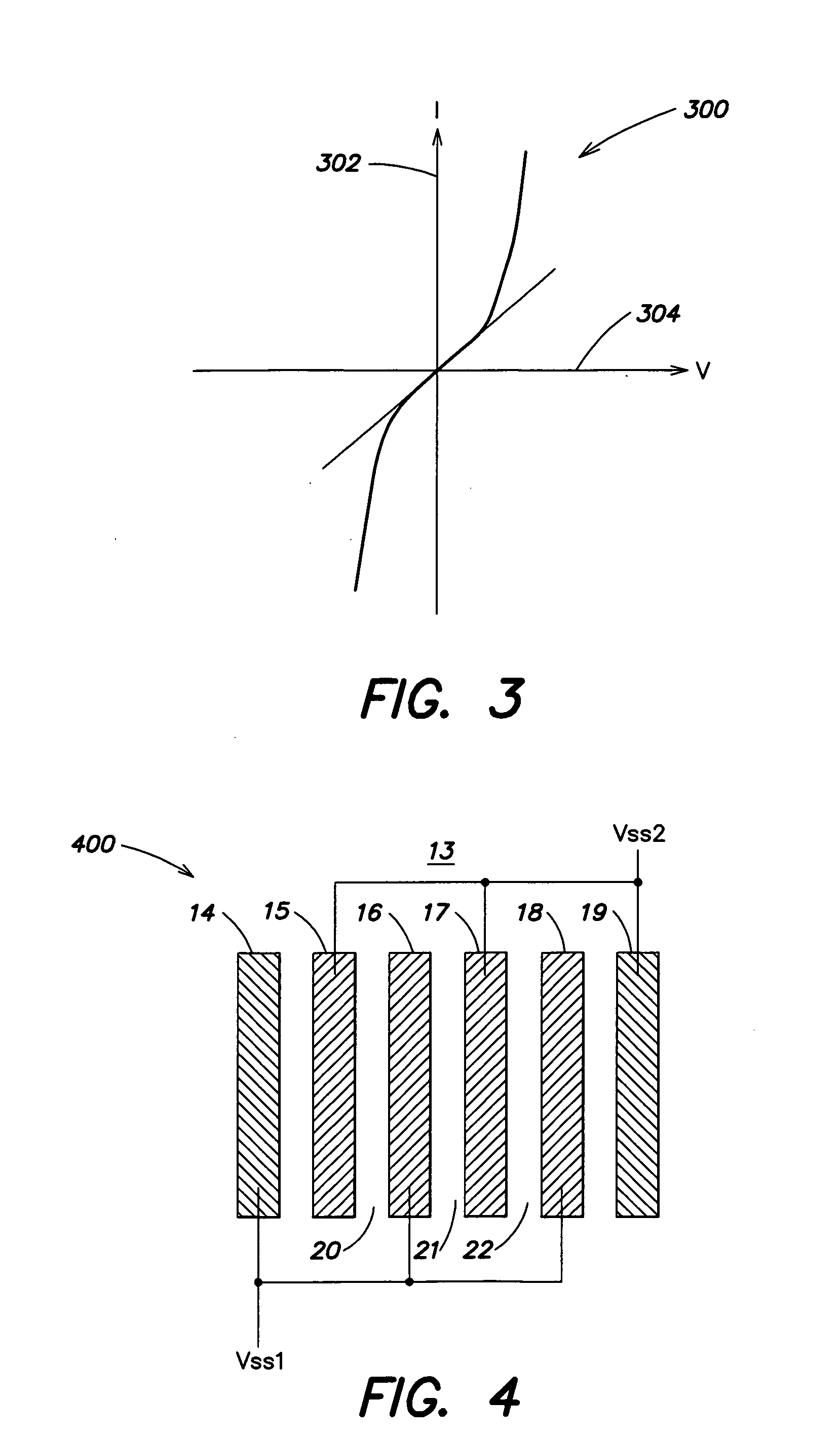Integrated circuit
a technology of integrated circuits and circuits, applied in the direction of electronic switching, transistors, electrical equipment, etc., can solve the problems of occupying a large area on the substrate, and achieve the effect of increasing the route length and thus the effective resistance of the substra
- Summary
- Abstract
- Description
- Claims
- Application Information
AI Technical Summary
Benefits of technology
Problems solved by technology
Method used
Image
Examples
Embodiment Construction
[0026]FIG. 2 is a schematic diagram illustration of a coupling circuit 200, which is an improvement to the prior art coupling circuit 100 of FIG. 1. The coupling circuit 200 includes an NPN transistor 11, the geometry and doping of which are symmetrical. The transistor 11 includes a first emitter 202 that is connected on a line 204 to a first voltage potential Vss1, and a second emitter 206 that is connected on a line 208 to a second voltage potential Vss2. The two power supply potentials Vss1, Vss2 are each connected through identical resistances 12 to a transistor base 210.
[0027]FIG. 3 is a plot 300 of the current-voltage characteristic of the coupling circuit illustrated in FIG. 2. Current is plotted along the vertical axis 302 and voltage is plotted along the horizontal axis 304. In response to small differences between the two power supply potentials, the behavior is resistive and is determined by the resistances 12 (FIG. 2). The activity of the transistor 11 is activated in re...
PUM
 Login to View More
Login to View More Abstract
Description
Claims
Application Information
 Login to View More
Login to View More - R&D
- Intellectual Property
- Life Sciences
- Materials
- Tech Scout
- Unparalleled Data Quality
- Higher Quality Content
- 60% Fewer Hallucinations
Browse by: Latest US Patents, China's latest patents, Technical Efficacy Thesaurus, Application Domain, Technology Topic, Popular Technical Reports.
© 2025 PatSnap. All rights reserved.Legal|Privacy policy|Modern Slavery Act Transparency Statement|Sitemap|About US| Contact US: help@patsnap.com



